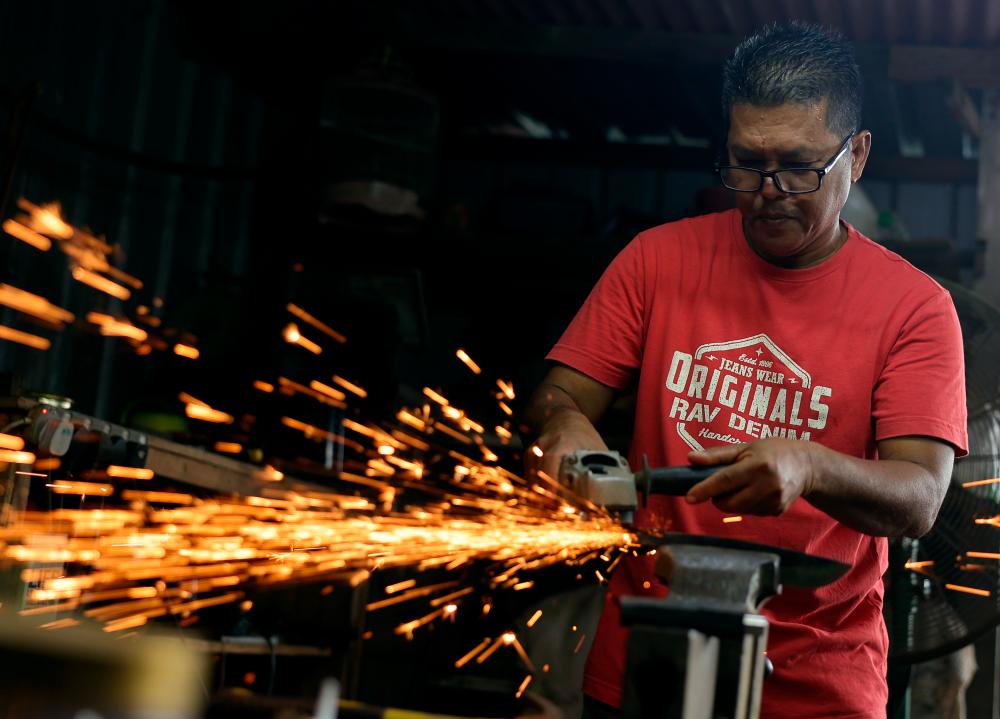KUALA PILAH: Love at first sight is what best describes how Abong felt when he saw the exquisite and distinctive design of a parang handle and shealth, which has prompted him to make a living out of it for the past 23 years.
The 53-year-old, whose real name is Anizam Mohd Deris said he was working as a lorry driver at the time and became interested in delving into the field after seeing parang or machete collections belonging to an experienced parang maker known as Haji Razal near his house in Rumah Rakyat Ampang Tinggi here.
“Every time I get home from work, I go to his workshop to see how each the parang is made. Since then, I’ve been learning with him until I can make parang on my own. At that time, I also thought about starting my own business and becoming a parang maker.
“Perhaps it’s in my blood because my late father also had a deep interest in parang. I decided to do it full-time in 2006, as I was getting tired of working as a lorry driver during the day and making parang at night,” he told Bernama at his workshop here.
Abong said his commitment to the industry was also motivated by a desire to elevate the art of traditional parang-making, which he fears will disappear over time if it is not preserved.
To maintain the quality, the father of two said he only used high-grade hardwood, such as kemuning, rengas, arang bunga, tanduk kerbau and kedondong hutan, which he obtained from the Orang Asli community in Tasik Chini, Pahang.
He said that the wood for a parang has to be dried for two to three months before it can be made into a handle or sheath.
The engraving on the sheath is done carefully to keep the intricate Malay woodcarving motifs and features, like flowers, he added.
On the process of making the blade, Abong said it starts with sourcing good-quality and durable steel, as the parang will be put to many different uses, including butchering and chopping wood.
“To make the blade, a steel piece will be heated until it becomes red-hot, then quenched and tampered to get the desired thickness before being built right into the handle,” he said.
The Kuala Pilah native said he only produces three to four blades per day, depending on the size that customers request, due to the great precision and patience required.
According to Abong, the process of making decorative parang is more demanding, as it requires high creativity and takes at least a day to produce, depending on the carving designs desired by the customer.
“In addition to daily use, collectors use parang as a decorative home item and gift,” he said adding that it was in high demand during Aidiladha.
Abong said he has so far made over 10,000 parang, with prices ranging from RM180 to RM300 depending on size and design.
“I also get orders for keris (traditional Malay weapon), and since the movie Mat Kilau became popular, the demand has been fairly high, and I have made about 100 blades so far,” he said.
Meanwhile, Abong said he is always willing to teach anyone who is interested in learning the technique of parang-making, as there aren’t many parang-makers in Negeri Sembilan.
“I hope that the art and skill will be passed down and preserved. Relevant parties, including the state government, must continue to uphold this heritage not only for the sake of the state’s economy but also for future generations,” he said. - Bernama









